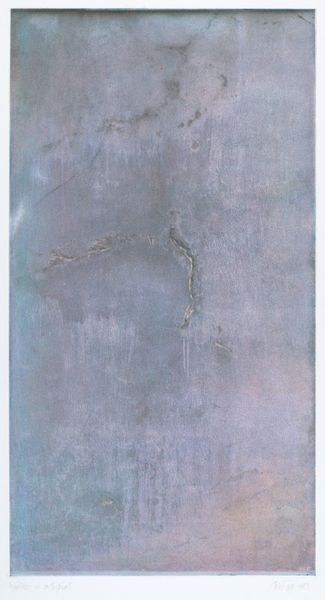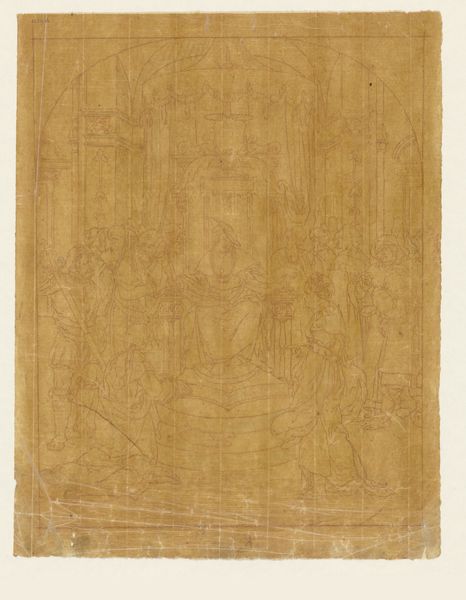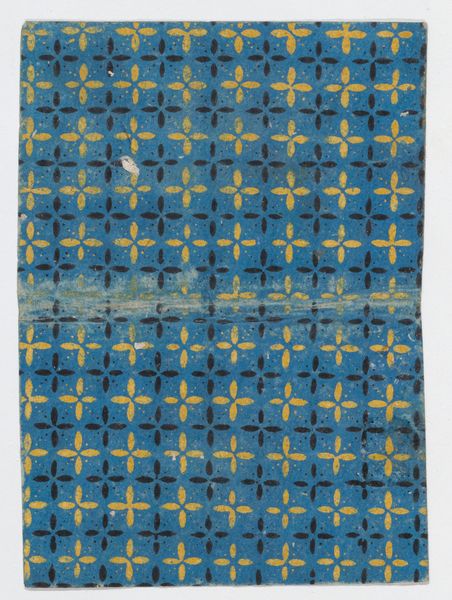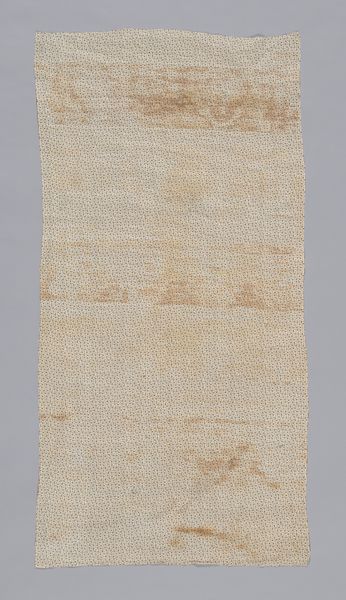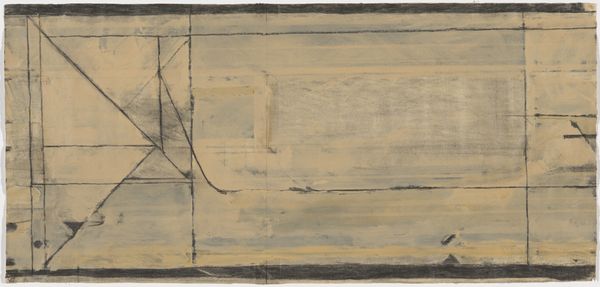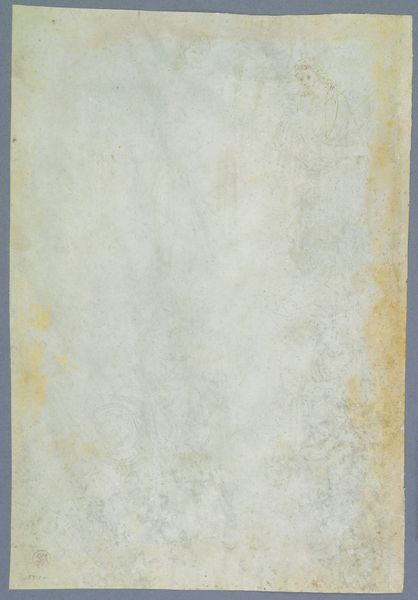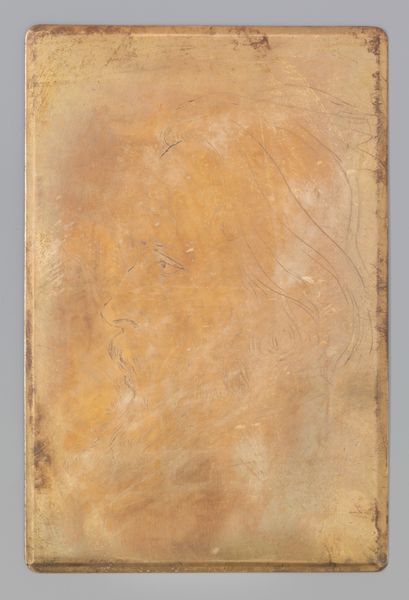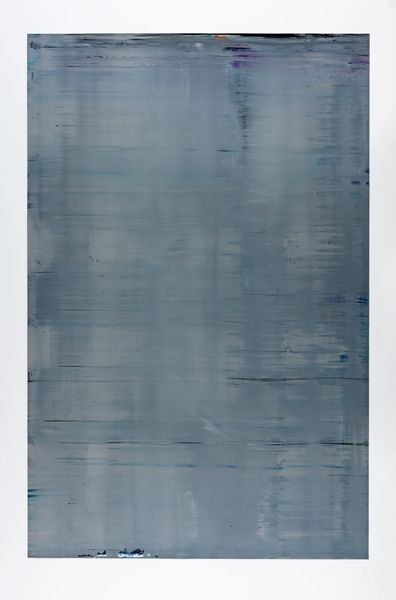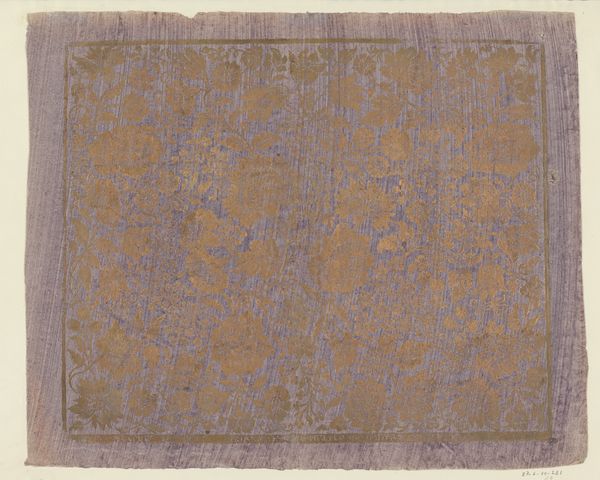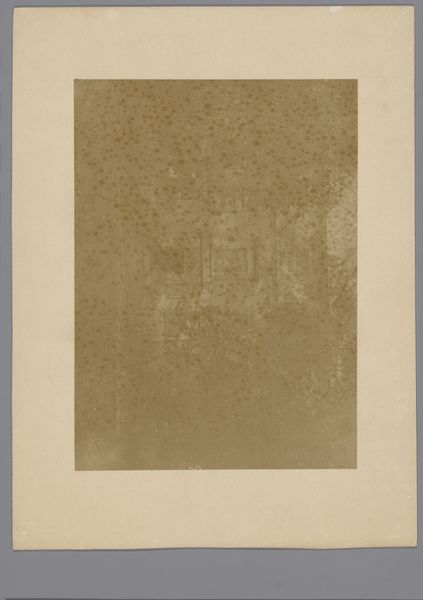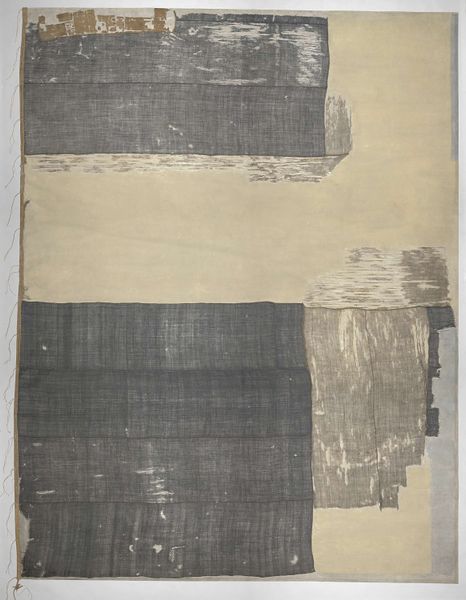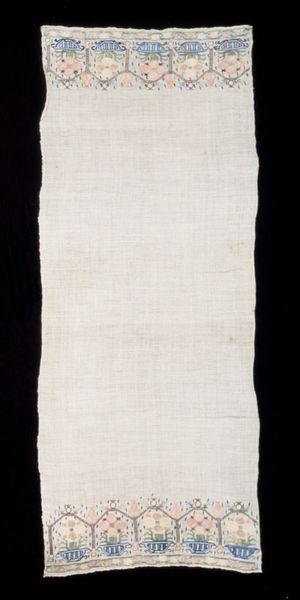
Lining from Thanka (Religious Picture) 18th century, Qing dynasty (1644–1911)
0:00
0:00
tempera, painting, weaving, textile, mural
#
byzantine-art
#
water colours
#
tempera
#
painting
#
asian-art
#
weaving
#
textile
#
text
#
mural
#
monochrome
Dimensions: 164.8 × 90.2 cm (64 7/8 × 35 1/2 in.)
Copyright: Public Domain
Editor: So, this is a "Lining from Thanka (Religious Picture)" from the 18th century, during the Qing dynasty. It's made with tempera and textile, so a painted woven piece. The blue is really striking but also muted somehow… what strikes you most about this work? Curator: For me, it's how a seemingly simple textile fragment can speak volumes about cultural exchange and religious practice. We have to consider that the Qing Dynasty was a period of Manchu rule in China. The Thanka tradition, deeply rooted in Tibetan Buddhism, was being navigated through the lens of Imperial power and patronage. Does this monochrome abstraction signify something specific or is its purpose purely utilitarian? Editor: Utilitarian how? It's so…abstract. Curator: Well, it's described as a "lining". So how does the concept of the hidden, or the support structure, become a metaphor for power dynamics? We know the Manchu emperors embraced Tibetan Buddhism, using it to legitimize their rule, particularly in regions with large Tibetan populations. This textile may have been a hidden element, a structural support, yet crucial for the image's integrity. Doesn't that suggest the complex, often unseen, negotiations of power and identity happening beneath the surface of these grand religious displays? Editor: I never thought about the lining as part of the message itself. That's a really interesting way to look at it - like the unseen labor that goes into these… these cultural artifacts. Curator: Precisely! And think about the monochrome: Is this deliberate? Does it speak to a particular sect or a specific aesthetic choice within the Qing court's engagement with Tibetan art? These are questions that prompt us to dig deeper. Editor: It definitely changes how I see the artwork. Thanks, that gives me a lot to consider. Curator: Likewise. It reminds me how even fragments can be powerful starting points for understanding larger historical and political narratives.
Comments
No comments
Be the first to comment and join the conversation on the ultimate creative platform.
